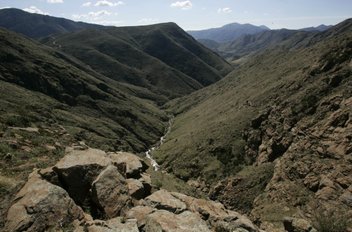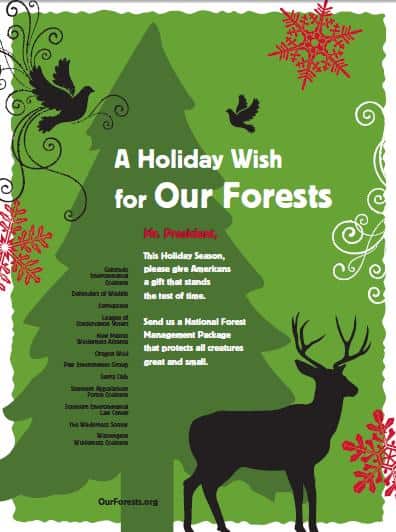
“Primitive.”
“Semi-primitive non-motorized.”
“Roaded-natural.”
The fine print of most Forest Service Plans contains terms from a recreation zoning scheme that is essentially the same as when it was developed in the 1980s. The Recreation Opportunity Spectrum (ROS) is a means to subdivide a forest by desired physical, social, and managerial features to provide a setting for compatible recreational activities. Although the basic framework has been in place for nearly 30 years, it may be lost in the discussions about a new forest service planning rule, and the system is showing some wear. The system was never fully integrated across resources. Forests and Regions have developed processes independently, leading to inconsistencies within and across Regional boundaries. Naming conventions vary, and there are differences in how wilderness areas are mapped, and how seasonal distinctions are addressed. Now, the importance of ROS maps in Forest Plans may be even greater than previously thought, after at least one court ruling saying these maps are constraints on recreational activities.
The 1979 ROS Users Guide, the 1990 ROS Primer and Field Guide, and the 2003 National ROS inventory mapping protocol describe the six distinct settings that are mapped in a Forest Plan: urban, rural, roaded natural, semi-primitive motorized, semi-primitive non-motorized, and primitive. Used in conjunction with Sense of Place (SOP) mapping, the Scenery Management System (SMS), and Benefits Based Management (BBM), ROS is an approach to display human values, meanings and attachment to the landscape.
The ROS system was at the heart of a sixth circuit decision discussed here a couple of months ago which struck down the revision of the Huron-Manistee Forest Plan. In that decision, the court addressed the concern about providing “quality recreation opportunities for hikers, backpackers, and cross-country skiiers” by upholding the ROS system as a “thoughtful methodology for matching settings and activities, among other planning purposes.” However, the court then went further and said that the Plan should not allow activities such as gun hunting and snowmobiling that are inconsistent with ROS descriptions like semi-primitive non-motorized. The court said: ”The [Forest] Service cannot expect us to defer to its ROS descriptions when they support its decision (which we have done above), but then to disregard those same descriptions when they conflict with its decision.” …. “the [Forest] Service’s decision not to balance these competing uses, and to disregard its own ROS descriptions, is what fell outside the relevant standards.”
One of the esoteric debates among forest planners these days is where exactly an ROS map fits in a forest plan. Often, ROS maps don’t match management area maps, and treatment of ROS zones varies from plan to plan. Some plans contain ROS elements as part of an aspirational “desired condition” while other plans list the identification of an ROS class as a “standard” that all projects must meet. Although ROS is very similar to the idea of a suitability map, like timber suitability or grazing suitability, ROS is not specific to a particular activity. It merely describes a setting for recreation activities, and only suggests certain recreational activities that might be compatible in that setting. Because the actual conditions of the recreation setting need to be validated on the ground, it’s difficult for a forest plan to specifically identify recreational opportunities.
Arguably the most important element of the ROS mapping process is the separation of semi-primitive non-motorized areas from other motorized or roaded settings. Essentially, a SPNM area is a contiguous unroaded area of at least 2,500 acres. A plan should have consistent direction for ROS, scenery management, travel management, road construction, and other developments. This part of a forest plan can be very important, because it can limit road building and other development on parcels smaller than the 5,000 acre threshold for potential wilderness areas, or areas previously mapped as roadless and controlled by roadless policies. While a “roadless” area by definition is larger than 5,000 acres, backcountry recreation activities are certainly possible in areas as small as the 2,500 acre threshold.
ROS needs to be featured as a central part of the forest planning rule. But it needs to be updated. Here are some considerations:
- The terms need to be simplified. Many people don’t understand the concept of “semi-primitive.” In some forest plans, management areas adopted a simpler concept known as “backcountry.”
- New categories may be necessary, to address distinctions between summer non-motorized and winter non-motorized, variations within Wilderness areas, or roaded-natural areas that may be roaded but generally non-motorized.
- The ROS concept should be expanded to incorporate other activities and resources. This might best work by requiring ROS zones to be integrated into the forest plan management area process.
- ROS classifications probably shouldn’t be treated as forest plan standards. There are too many variables that influence what recreational activities can occur in an area. However, the planning rule should treat the ROS idea as an important feature of forest plans and plan objectives, standards, and guidelines should be consistent with the ROS classifications.
- The designation of ROS zones needs to be made at multiple scales. ROS zoning is subject to the same pitfalls as general management area zoning – it can tend to fragment a forest, and doesn’t lend itself to the larger question of regional recreational experiences. One report suggests that the inability to “think and act regionally” leads to a homogenization of recreation experiences which suboptimizes and reduces the flow of recreational experiences in the region.
The ROS system is a sophisticated tool that has been adopted by other agencies and even extended to nonfederal lands. It’s time to dust it off, and make sure it’s a key element of the new planning rule.








